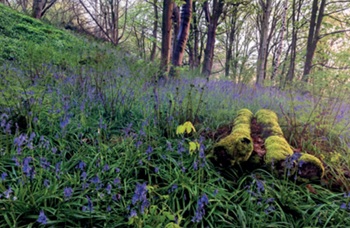Shopping centre

|
| Mermaid Quay, a waterfront shopping and leisure district in Cardiff Bay. |
Contents[hide] |
[edit] The origins of shopping centres in the UK
The first shopping centre in the UK was the Brent Cross Shopping Centre, which opened in 1976 in London. However, the concept of a large, enclosed mall with multiple stores under one roof originated in the United States in the 1950s and 1960s.
The first modern shopping centre in the United States was the Southdale Center in Edina, Minnesota, which opened in 1956. It was designed by Austrian architect Victor Gruen, who envisioned a community gathering place with shops, restaurants, and public spaces. Gruen's design was based on the European arcade, a covered shopping street that had been popular since the 19th century.
The success of Southdale Center and other malls inspired developers in the UK to create similar shopping experiences. Brent Cross Shopping Centre was designed by architects Chapman Taylor and Partners, who had worked on several shopping centres in the US. It was built on a 45-acre site and featured more than 120 shops, restaurants, and cafes. The Brent Cross Shopping Centre attracted thousands of shoppers on its first day. Its success inspired other developers to build their own shopping centres, and by the 1980s, there were dozens of large shopping centres across the country.
Today, shopping centres remain a popular destination for UK shoppers, offering a wide range of stores, restaurants, and entertainment options. However, the rise of online shopping has led to some challenges, as retailers struggle to compete with e-commerce giants like Amazon.
[edit] Key characteristics of shopping centres in the UK
Shopping centres in the UK tend to be large, with multiple levels and hundreds of stores. Some of the largest centres, such as the Westfield shopping centres in London, have more than 300 stores.
They typically feature a mix of retailers, including department stores, high street chains, independent shops, and specialist stores. In addition to fashion and beauty retailers, many shopping centres also have supermarkets, electronics stores, and other types of retailers.
Many shopping centres in the UK include entertainment and leisure facilities, such as cinemas, bowling alleys, and restaurants. These amenities can help to attract shoppers and keep them there for longer periods of time.
Most shopping centres in the UK are enclosed, providing a comfortable indoor environment for shoppers, regardless of the weather outside. Some centres, such as the Bullring in Birmingham, have open-air areas as well.
They typically have large car parks, which are often free or have discounted rates for shoppers. Some centres are also accessible by public transport, with bus and train stations located nearby.
Many shopping centres in the UK have distinctive designs and architectural features, such as glass roofs, atriums, and modern facades. Some centres are also designed with sustainability in mind, incorporating features such as green roofs and rainwater harvesting systems.
They often host events and marketing campaigns to attract shoppers and create a sense of community. These can include seasonal events, celebrity appearances, and social media campaigns.
[edit] The future of shopping centres in the UK
There are several trends that are likely to affect the future of shopping centres in the UK.
The rise of online shopping has already had a significant impact on traditional brick-and-mortar retailers, including those in shopping centres. As consumers increasingly turn to e-commerce for their shopping needs, shopping centres will need to find ways to adapt and provide a compelling in-person shopping experience.
Technology is rapidly changing the way we shop, with innovations such as mobile payments, augmented reality, and virtual try-ons becoming more common. Social media is also an important tool for retailers to reach and engage with consumers, and shopping centres will need to use social media effectively to promote their stores and events. This could include using influencers, creating engaging content, and offering social media-exclusive promotions.
Shopping centres are increasingly becoming community hubs, offering more than just retail spaces. This could include providing spaces for community events, art installations, or co-working spaces. By creating community-focused spaces, shopping centres can foster a sense of belonging and attract a wider range of visitors.
Pop-up shops and events are becoming more popular, providing a way for retailers to test new products and engage with customers in a more experiential way.
Sustainability is also becoming an increasingly important issue for consumers, and shopping centres will need to demonstrate their commitment to environmental responsibility in order to attract and retain shoppers.
Overall, the future of shopping centres in the UK will depend on their ability to adapt to changing consumer preferences and embrace new technologies and trends.
[edit] Related articles on Designing Buildings
- City centre.
- Edge of centre.
- Friarsgate Shopping Centre, Lichfield.
- High street (planning and policy).
- High street.
- Local shopping facilities.
- Main town centre uses.
- Mall.
- Out of town.
- Portas review.
- Primary shopping area definition.
- Restoring Singapore shophouses.
- Secondary shopping area.
- Shop.
- The Hong Kong shophouse.
- Town centre.
- Types of building.
Featured articles and news
The increasing costs of repair and remediation
Highlighted by regulator of social housing, as acceleration plan continues.
Free topic guide on mould in buildings
The new TG 26/2024 published by BSRIA.
Greater control for LAs over private rental selective licensing
A brief explanation of changes with the NRLA response.
Practice costs for architectural technologists
Salary standards and working out what you’re worth.
The Health and Safety Executive at 50
And over 200 years of Operational Safety and Health.
Thermal imaging surveys a brief intro
Thermal Imaging of Buildings; a pocket guide BG 72/2017.
Internally insulating a historical building
An experimental DIY approach using mineral thermal lime plaster.
Tree species selection for green infrastructure: A guide for specifiers.
50 million new trees over 25 years.
Art of Building CIOB photographic competition public vote
The last week to vote for a winner until 10 January 2025.
The future of the Grenfell Tower site
Principles, promises, recommendations and a decision expected in February 2025.
20 years of the Chartered Environmentalist
If not now, when?
Journeys in Industrious England
Thomas Baskerville’s expeditions in the 1600s.
Top 25 Building Safety Wiki articles of 2024
Take a look what most people have been reading about.
Life and death at Highgate Cemetery
Balancing burials and tourism.
The 25 most read articles on DB for 2024
Design portion to procurement route and all between.
The act of preservation may sometimes be futile.
Twas the site before Christmas...
A rhyme for the industry and a thankyou to our supporters.
Plumbing and heating systems in schools
New apprentice pay rates coming into effect in the new year
Addressing the impact of recent national minimum wage changes.




























Comments
[edit] This is incorrect
the frenchgate shopping centre in Doncaster opened in 1968. Therefore being older.